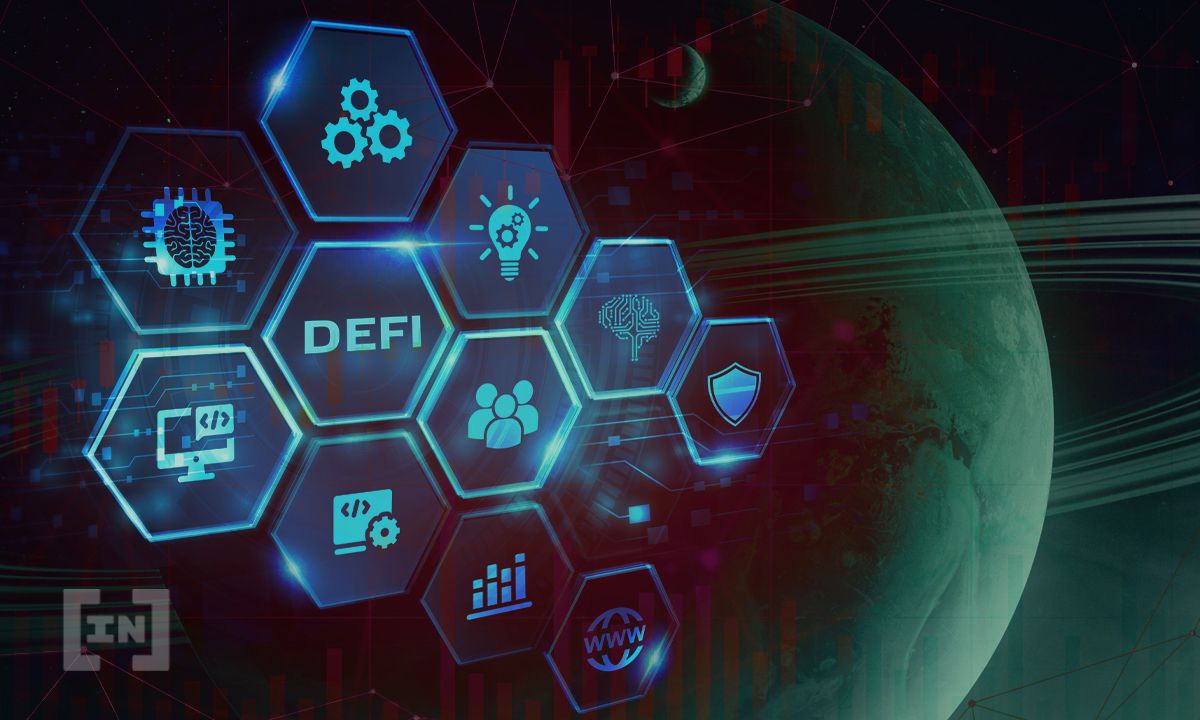We live in a world where it has become impossible for humans to live without technology. Ironically only a few know how it works.
When people needed to know the nuts and bolts of tech, it had far fewer users with limited use cases. However, that’s not the case today. More often than not, the best technology is also the one people use with little interest or need for the inner-working details.
Decentralized Finance (DeFi) is facing a similar revolution. A few years ago, the space was nascent and attracted little attention from big financial players. Since 2020, the industry has experienced incredible growth. The total value locked in DeFi products surpassed $169.96 billion in September 2021.
This resulted from continuous innovation that managed to simplify complex DeFi mechanisms, attracting many newer users to the space.
Some may argue that one cannot overlook the hurdles. There are still concerns looming over the lack of compliance with anti-money laundering and counter-financing of terrorism (AML/CFT) regulations.
There are also questions over regulatory uncertainty and volatility. These are often the reason larger financial entities and retail investors are still wary.
Despite this, one can also not ignore the breathtaking innovation happening in the DeFi space. With its promise of providing everyone access to financial services regardless of their location or age. A 13-year-old has an equal opportunity to invest just as easily as a seasoned banker.
However, for that to be possible on a larger scale, decentralized financial products will have to be simplified to cement DeFi as the future of financial services.
The future of finance is decentralized
According to the Global Financial Index, around 1.2 billion people are still unbanked. This is predominantly due to a lack of financial literacy and the high costs of opening and maintaining a bank account.
While fintech initiatives tackle this problem, decentralized methods have the best chance to define the future of finance. One of the reasons is that it is built on blockchain technology, which is not governed or dependent on any centralized authority.
Today, regular consumers need to deal with a raft of intermediaries to access financial services, including loans, mortgages, trading, and insurances. These middlemen earn a fee on every transaction and are difficult to avoid due to necessity and a lack of more efficient alternatives. Enter DeFi.
DeFi and blockchain technology remove traditional financial risks such as counterfeiting and fraudulent activity. They achieve this primarily by increasing transparency and lowering transaction fees. These break down the barriers to entry for current mainstream financial services.
The technology and its applications are still prone to hacks and faults, as with any exploratory technology. However, the widespread adoption relies on these trials and errors and the importance of internal and external security audits to strengthen and mature the future of this decentralized system.
The complexity of the Defi ecosystem and the intricate understanding required to access decentralized financial products and services is currently limiting mass adoption.
If DeFi can address this complexity and create more straightforward products and services accessible by the masses, this will redefine finance as we know it.
A new DeFi future: How can we get there?
Collaboration is key when it comes to increasing the adoption of Defi. By expanding the cooperation between decentralized protocols and traditional financial systems, the ecosystem will experience an added boost.
Even though the current trend is that only people well versed in crypto are the primary users within the space, introducing traditional financial products in a decentralized manner will largely boost the ecosystem.
These include the use of managed pools and pool funding, institutional/corporate credit, retail lending/borrowing, trading, stocks, stablecoins, understanding of Ethereum and Binance, and so on.
Traditional finance is still limited to specific geographical locations, the borderless nature of Defi also offers investors, and liquidity providers access to global opportunities.
Through these, they can easily access pools in other countries/industries. Accessing financial markets and investment opportunities in different countries will soon be as simple as sending an email.
DeFi instruments will become more user-friendly, readily available, and secure for users. As such, traditional financial products with low yields and slow speeds will inevitably become less appealing to the masses.
Traditional finance will ultimately become decentralized
Traditional financial institutions are already embracing decentralized finance. They’re incorporating digital asset management into their portfolios, and some are expanding their testing services based around DeFi. For example, automated trading and yield farming.
In Asia, Thailand’s Siam Commercial Bank’s investment arm, SCB 10X, launched a $50 million DeFi VC fund to invest in early-stage startups. Thus, demonstrating that even large government and institutional banks are now seeing the potential of DeFi and the future.
Today, the most popular DeFi products mirror those we observe in traditional finance—for example, credit services, loans, and trading.
Right now, borrowing is complex for many, especially in regions where unbanked populations are high. This is due largely to high-interest rates and lack of access to physical banking locations.
In DeFi, the only requirement to take out a loan is to provide collateral with other crypto assets. This makes it more straightforward for the unbanked population to acquire loans, create savings, send funds abroad and access financial services.
DeFi services strive to simplify and replicate well-known financial products used in the traditional finance sector and fintech.
Automating and simplifying decentralized financial products removes many complex barriers that prevent people from quickly understanding and accessing finance. This literacy is valuable. In the future, it will allow consumers to transfer, trade, borrow and lend beyond geographical borders and regulations.
While the technology is still new, the upside is promising. As the industry matures and products become easier to use, more users will adopt DeFi as their trusted form of finance. This technology will become a part of our everyday lives.
Disclaimer
In compliance with the Trust Project guidelines, this opinion article presents the author’s perspective and may not necessarily reflect the views of BeInCrypto. BeInCrypto remains committed to transparent reporting and upholding the highest standards of journalism. Readers are advised to verify information independently and consult with a professional before making decisions based on this content. Please note that our Terms and Conditions, Privacy Policy, and Disclaimers have been updated.


